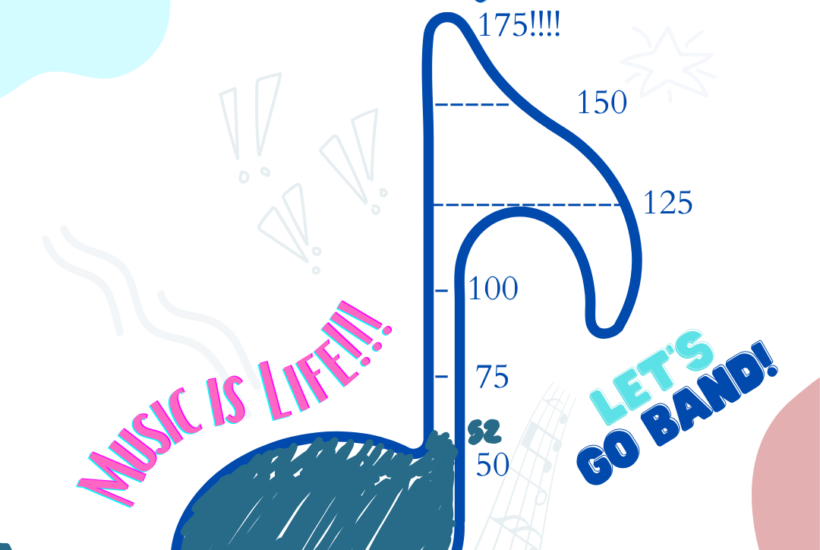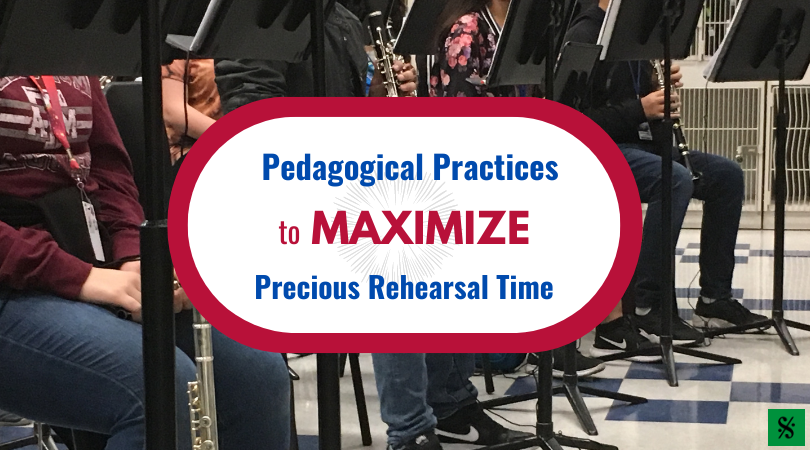Rhythm as a Fundamental
We are all aware of the importance of the almighty Concert F. We understand the gravity of setting up our beginners tonally from day one, and the presence of long tones and articulation exercises have become standards in our band halls. But of equal value at the core of musicianship is the ability to put those beautiful sounds into discernible patterns, into rhythms, to read. Rhythm is as fundamental to music as tone, and yet few directors approach it with the same passion.

Despite the fact that their faces and bodies are learning something wildly new and foreign, the mind of a beginner is primed for attacking rhythm from day one. Thanks to fractions in their math classes, their brains are ready to understand and process rhythms far more complex than any song they will be ready to play for quite some time. In our band hall, the beginners are learning to count with breath impulse by the second day of school and are often counting quarters, halves, wholes, dotted halves, and eighth notes before we ever play our first note. By the time we reach songs using dotted quarters or syncopation, those rhythms are “old school” and no longer cryptic.
Applying the fundamental approach to rhythm is incredibly easy. As you build your daily routine, allow 2 or 3 minutes of class each day to be devoted solely to counting (more on days you introduce new rhythms). In my classes, counting is the first thing we do every day. It gets them engaged immediately and settles their brains into band mode. And be creative; counting doesn’t have to literally mean counting. Sometimes we sing our counting on “ta”. Sometimes we “air play”, other times sizzle. Kids love playing counting games like Mess Up Drop Out and Don’t Break the Chains. Every minute spent on rhythm makes sight-reading and learning new songs that much easier.
Ways to Incorporate Rhythm Every Day:
- Count with Numbers
- Count using Ta (or equivalent articulation syllable)
- Count by Air Playing
- Count by Sizzling
- Play Rhythm or Counting Games
- Count older charts or songs at a faster tempo
- Eventually turn older charts/songs into cut time
Counting every day allows kids to be successful on many planes. Some of our kids that struggle the most with playing songs well are the quickest to understand rhythm. Just because they are not physically coordinated enough yet to put all of the tactile parts together doesn’t mean doesn’t mean they can’t be a leader rhythmically.
By learning and pushing rhythm concurrently with tone and the first basic notes, we keep their brains just as active as their facial muscles and set them up to be better, more independent readers. They may have a beautiful Concert F, but that gorgeous note at the wrong time is a wrong note.
Darcy Potter Williams teaches at Stiles Middle School in Leander, Texas. She is in her 13th year of teaching and received her Bachelor from West Texas A&M University. Her band performed at the Midwest Clinic in 2015. She hosts the band podcast After Sectionals: The Podcast About All Things Band. Darcy is the author of ‘Teaching Rhythm Logically’, an eBook method for teachers that helps band directors learn to structure their rhythm pedagogy through actual scripts, images and diagrams to use while teaching, as well carefully sequenced counting charts and ways to incorporate them into your daily classes 6-8th. bitly.com/rhythmlogically
Related Reading:
Drop Out Contest
Compound Foot Tap (Counting in compound meter)
Teaching Clarinets to Roll to A Isn’t Enough
Band Performance Day
If you would like to receive our weekly newsletter, sign up here.
Don’t forget to like us on Facebook too!
Learn. Share. Inspire.
BandDirectorsTalkShop.com






[…] Teaching Rhythm Logically Darcy Potter Williams from Stiles Middle School in Leander ISD […]